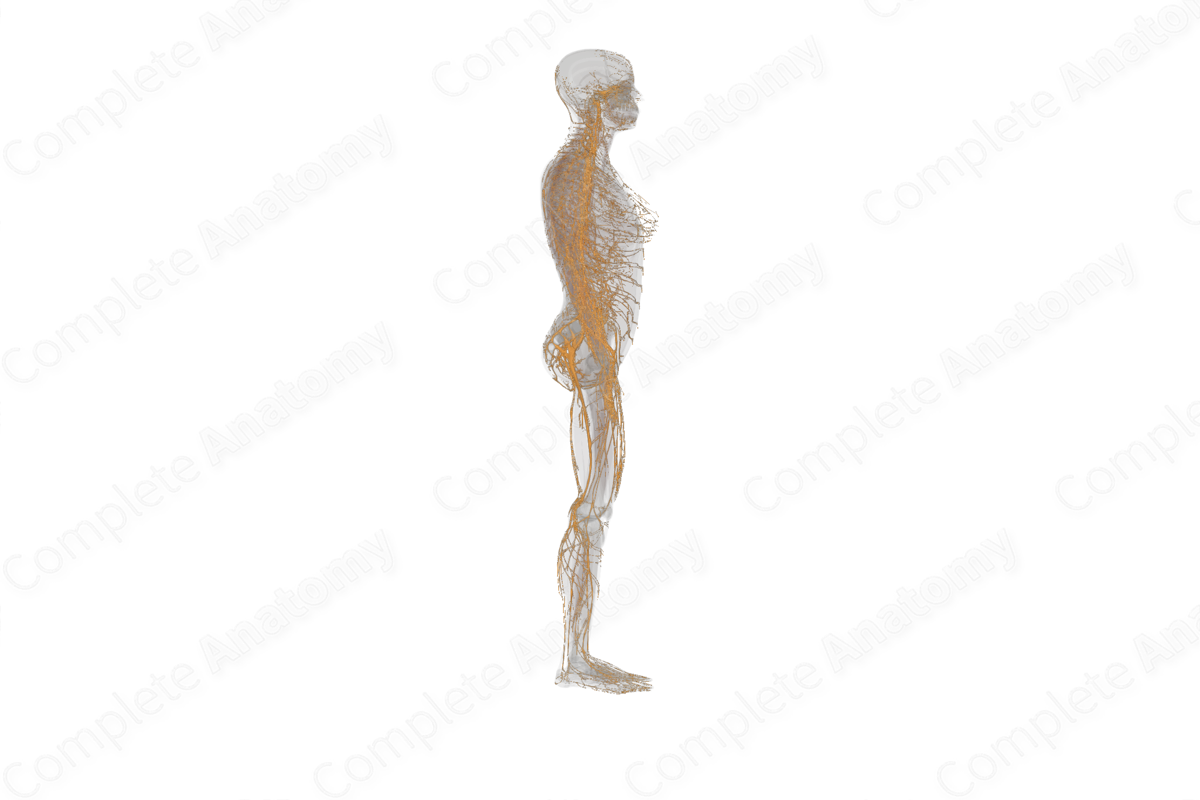
Structure
Peripheral nerves and ganglia make up the peripheral nervous system (PNS). They connect peripheral structures to the central nervous system (CNS). A nerve fiber is composed of axons, neurolemma, and surrounding endoneurial connective tissue. The neurolemma surrounds individual axons and is composed of Schwann cell membranes. Schwann cells are specialized cells that separate each axon from one another. There are two classifications of nerve fibers in the peripheral nervous system; myelinated nerve fibers and unmyelinated nerve fibers. The neurolemma in myelinated nerve fibers is comprised of Schwann cells that are organized as a continuous series of cells, wrapping around each individual axon to form a myelin sheath. The neurolemma in unmyelinated nerve fibers is also composed of Schwann cells, however, rather than a sheath-like arrangement, multiple axons are embedded within the cytoplasm of each cell (Pocock, Richards and Richards, 2013).
A nerve consists of a bundle of nerve fibers, or a fascicle which is a “bundle of bundled fibers” in the case of large nerves. Connective tissue layers surround and bind the nerve fibers and fascicles together. These connective tissue layers include the endoneurium, perineurium, and epineurium, which make the nerves reasonably strong and resilient. Blood vessels, known as the vasa nervorum, nourish the nerve fibers and their coverings (Sherwood, 2012).
Related parts of the anatomy
Anatomical Relations
Efferent axons convey motor impulses from motor neurons in the central nervous system to body muscles. Conversely, afferent nerve fibers transfer sensory information to the central nervous system from sensors, such as pain and temperature receptors (Pocock et al., 2013).
Function
Nerves transmit information to and from the central nervous system. In order to transmit this information, signals must be converted to electrochemical impulses and in turn to action potentials. An action potential is a depolarization of the cell membrane that results in the transmission of an electrical signal (Sherwood, 2012).
List of Clinical Correlates
—Multiple sclerosis
—A pinched nerve
References
Pocock, G., Richards, C. D. and Richards, D. A. (2013) Human Physiology. Oxford Core Texts: OUP Oxford.
Sherwood, L. (2012) Human Physiology: From Cells to Systems. Cengage Learning.
Learn more about this topic from other Elsevier products
Introduction to the central and peripheral nervous systems: Video, Causes, & Meaning

Introduction to the central and peripheral nervous systems: Symptoms, Causes, Videos & Quizzes | Learn Fast for Better Retention!




